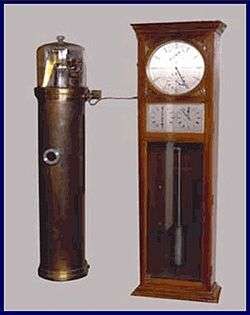Frank Hope-Jones
Frank Hope-Jones (1867–1950) was a British horologist.
He was born the son of William Hope-Jones in Eastham, Wirral Peninsula and educated privately. His brother was Robert Hope-Jones, the electric organ designer. His parents were from Ruthin, Wales.

Frank became interested in electrical apparatus when his elder brother Robert worked for a telephone company and assisted him when he began designing and building electric organs. Frank himself moved into the field of electric clocks and founded the Synchronome Company of London in 1895.[1]
The Synchronome company manufactured electrically operated master clocks, patented in 1907, such as the Shortt-Synchronome clock. These were pendulum clocks which were automatically impulsed every half minute by mechanical means, the mechanism then being reset electrically. They were the most accurate clocks available prior to the development of the quartz crystal and atomic clocks.[1]
He was also interested in timekeeping via radio signals and in 1913 Synchronome started to manufacture the Horophone, a device for capturing radio time signals. He also suggested to the BBC that they should transmit a time signal and in 1924 the Greenwich pips were first broadcast.[1]
In 1946 he was awarded the Gold Medal of the British Horological Institute.
He died in Surrey at the age of 82. He had married Florence M. Gask (née Tippett) in 1917. They had a daughter Agnes.
References
- 1 2 3 "The Other Hope-Jones". Retrieved 2012-05-17.